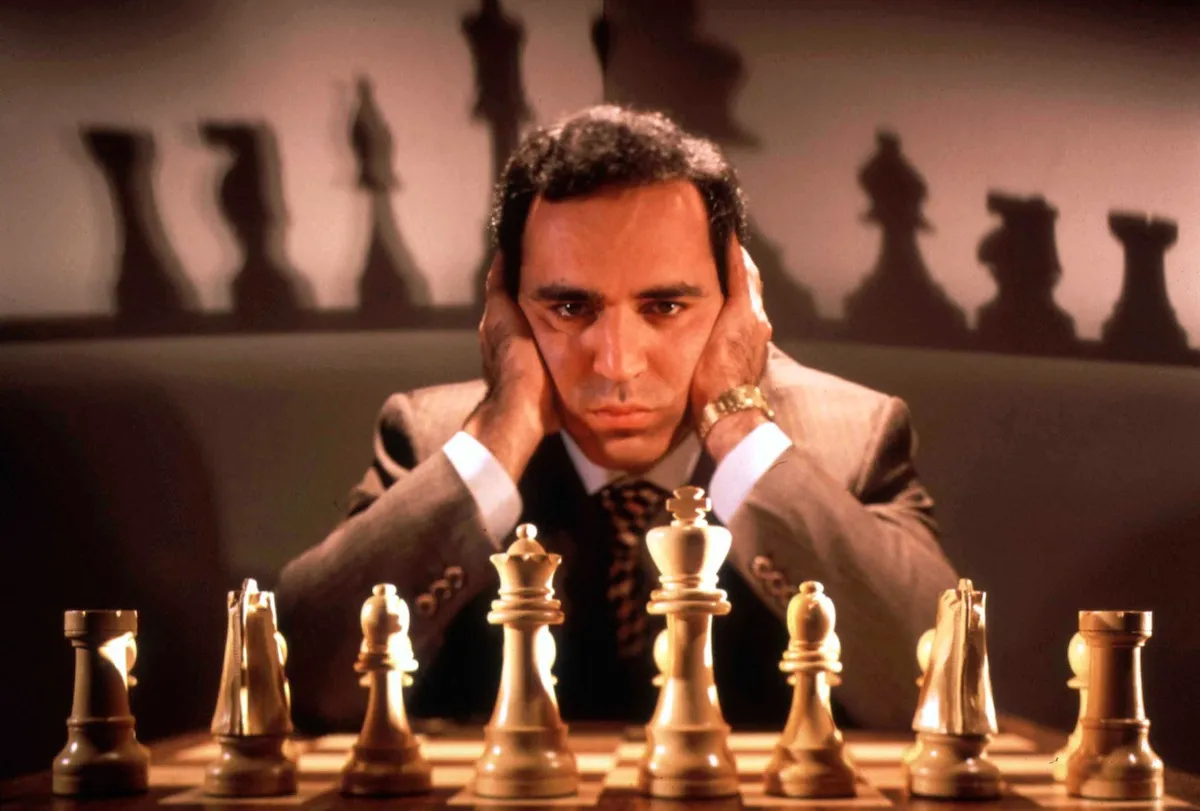
Garry Kasparov: A Masterclass in Chess Strategy and Tactics
Studying Garry Kasparov’s games offers a wealth of insights into advanced chess strategy, tactics, and overall understanding of the game. Here are some key games and analyses that highlight Kasparov’s genius and contributions to chess:
Key Games
- Kasparov vs. Karpov, World Championship 1985, Game 16
- Opening: Sicilian Defense, Scheveningen Variation
- Key Moment: Kasparov’s pawn sacrifice on the 16th move (d5) opened lines and led to a powerful attack. The game is notable for Kasparov’s dynamic play and Karpov’s defensive resilience.
- Result: Kasparov won, leading to him becoming the youngest World Chess Champion at the age of 22.
- Analysis: This game exemplifies Kasparov’s aggressive style and deep preparation in the Sicilian Defense.
- Kasparov vs. Topalov, Wijk aan Zee 1999
- Opening: Pirc Defense
- Key Moment: Kasparov’s stunning sacrificial combination starting with 24. Rxd4!!, leading to a spectacular queen sacrifice and an eventual decisive attack.
- Result: Kasparov won.
- Analysis: Often referred to as the “Immortal Game of the 20th Century,” this game showcases Kasparov’s tactical brilliance and imaginative play.
- Kasparov vs. Anand, World Championship 1995, Game 10
- Opening: Ruy Lopez, Open Variation
- Key Moment: Kasparov’s preparation and deep understanding of the opening led to a crushing kingside attack.
- Result: Kasparov won.
- Analysis: This game highlights Kasparov’s ability to turn theoretical knowledge into practical results, exploiting even the slightest inaccuracies by his opponents.
Analyzing Kasparov’s Play
- Opening Preparation:
- Kasparov was known for his extensive opening preparation. He frequently introduced novelties and deeply researched lines to gain early advantages. His work in openings like the Sicilian Defense, King’s Indian Defense, and Ruy Lopez remains influential.
- Dynamic Play:
- Kasparov favored dynamic, double-edged positions. He was comfortable with complexity and often steered games into highly tactical and sharp territories where his calculation skills could shine.
- Psychological Approach:
- Kasparov understood the psychological aspects of chess, often applying pressure on his opponents not just on the board but also through his confident demeanor and psychological warfare.
- Endgame Technique:
- Although known for his middlegame prowess, Kasparov’s endgame technique was also exceptional. He converted many slight advantages into wins through precise and methodical play.
Resources for Studying Kasparov’s Games
- Books:
- “My Great Predecessors” series by Garry Kasparov: A comprehensive study of the World Chess Champions before Kasparov, including his own games and annotations.
- “Garry Kasparov on My Great Predecessors, Part V” and “Garry Kasparov on Modern Chess” series: Focuses on Kasparov’s own career and key games.
- Online Databases and Resources:
- ChessBase: Extensive database of Kasparov’s games with detailed annotations.
- Lichess and Chess.com: Platforms with Kasparov’s games available for review, often with community annotations and engine analysis.
- Videos and Lectures:
- YouTube channels and platforms like Chess.com and ICC (Internet Chess Club) offer video analysis of Kasparov’s games by top players and commentators.
Example Game Analysis
Here’s a detailed analysis of one of Kasparov’s famous games:
Kasparov vs. Topalov, Wijk aan Zee 1999
- e4 d6
- d4 Nf6
- Nc3 g6
- Be3 Bg7
- Qd2 c6
- f3 b5
- Nge2 Nbd7
- Bh6 Bxh6
- Qxh6 Bb7
- a3 e5
- O-O-O Qe7
- Kb1 a6
- Nc1 O-O-O
- Nb3 exd4
- Rxd4 c5
- Rd1 Nb6
- g3 Kb8
- Na5 Ba8
- Bh3 Ka7
- Rhe1 Rhe8
- Qd2 Qc7
- b4 cxb4
- axb4 d5
- e5 d4
- Na2 Nfd5
- e6 f5
- g4 Ne3
- Rxe3 dxe3
- Qxe3 f4
- Qe1 Bd5
- Nc3 Bxf3
- Rxd8 Rxd8
- e7 Re8
- Qf2 Ba8
- Nxb5+ axb5
- Qxb6+ Qxb6
- Nc6+ Bxc6
- Bg2 Bxg2
- Kb2 f3
- g5 f2
- Kb3 f1=Q
- Ka3 Qb1
- c3 Qa6#
- Key Moment: The combination starting with 24. e5!! and the ensuing complications leading to the stunning finale with the queen sacrifice 35. Nxb5+!! and 36. Qxb6+!!.
This game exemplifies Kasparov’s creativity and tactical prowess, making it a must-study for chess enthusiasts looking to understand the depth and beauty of chess at its highest level.



